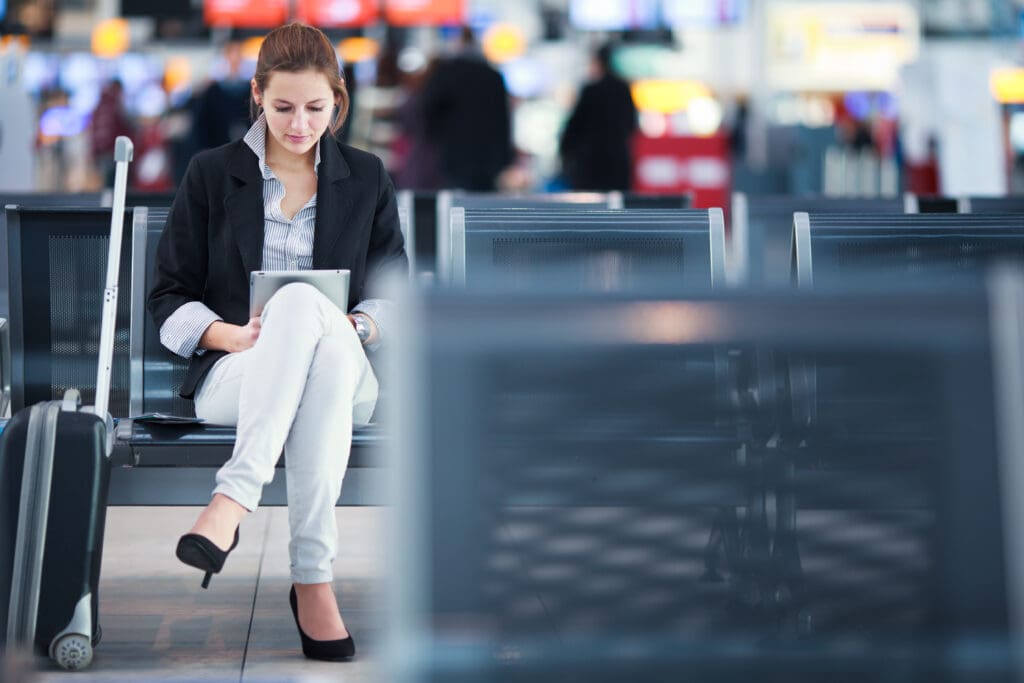Sometimes you don’t have much choice of which airport to fly from or to. Even when you don’t, you still want to be prepared. This is why it’s important to know what the best and worst airports are in Europe to better plan your trip.
Airports can often be stressful. You need to double-check that you have all your documents, face rigorous security checks, and may face delays. Due to this, you want the process to be as simple as possible.
Some airports do a great job at that, whereas others fall way behind. Knowing what the best and worst-rated European airports are can be a helpful resource so you know what to expect – which is why Holidu, the holiday rental platform, compiled a list of some of the best and worst airports based on Google reviews. Here you’ll find out all the answers.
What Makes a Good or Bad Airport?
Firstly, it’s important to know what makes an airport good or bad. A common factor in bad reviews for airports is congestion. This isn’t always the fault of the airport. Many times it can be due to a growing population and a lack of local alternatives. This can mean an airport deals with a capacity it wasn’t designed for.
Other airports can simply be badly designed with navigation becoming difficult and amenities being too far apart. Some issues can come from security counters being constantly understaffed or comfort areas being too small.
Infrastructure can also be an issue for connectivity. An airport with bad transport links may solely rely on bus or car travel. The best airports often have rail links or trams directly connected to the airport. Poor infrastructure can be made even more of a headache if the airport is far from a city center.
When you have an outdated airport, it makes it much more vulnerable to flight delays. A small issue can suddenly snowball into a crowded and chaotic environment. This is especially true for airports with higher capacity.
The Best Airports in Europe
For those with an Istanbul stopover, you’re in luck. Based on Google reviews, Istanbul Airport in Turkey is the best in Europe. It’s no surprise it’s a newer airport, having been first opened in 2018. It was made to eventually handle over 200 million passengers and was done so with an intuitive layout.
Its futuristic design is not just aesthetically impressive but also offers a vast range of dining and shopping options. The design has also incorporated digital innovation into the process, allowing for seamless security checks and powerful mobile services.
Coming in at second is the Francisco de Sá Carneiro Airport in Porto, Portugal. What’s impressive here is how the airport was first built in 1945. However, it has managed to keep up with the times, including a new terminal opening in 2006. Users praise it for the straightforward connections, clean design, and excellent performance.
Helsinki Airport in Finland comes in at third. Taking in over 16 million passengers, it is praised for precision and comfort. It is easy to navigate and offers short security checks. There is even a touch of personality with the airport, giving it a more warming feel than many other airports.
The Worst Airports in Europe
Despite only being 70th on the list of the busiest airports in Europe, Heraklion International Airport in Greece is notoriously bad. Opened in 1939, it is now badly outdated with poor facilities and a lack of space. This leads to constant overcrowding issues across the airport.
Bordeaux-Mérignac Airport in France comes in a 2nd. It is even smaller than Heraklion but is often described as hopelessly inefficient. Facilities don’t meet the volume for demand and it’s a similar problem for the Brussels South Charleroi Airport in Belgium in 3rd. A huge distance away from the city, its an airport that provides a poor experience with very few amenities.
Another bad airport in 4th place is Manchester Airport. Despite its importance and high traffic volume, it has never seems to cope with demand. Staffing, baggage and security have long been noted as serious issues.
How to Survive a Bad Airport
Sometimes traveling to a bad airport is your only option. When you do so, arriving early is always seen as a good idea. It will allow you to navigate any issues or delays. Aspects such as long security checks are easier to cope with when you’re not stressed about time.
You also want to ensure you can cope with any delays. This means bringing your own entertainment along with your devices, such as a novel or puzzle book. For those devices, you want to charge them up in advance.
Snacks and water are also a good idea, especially as you don’t want to be stuck with airport prices for any length of time. Lastly, you want to stay flexible and mentally prepared. If you’ve already accepted that an airport is going to be low-quality, you can be less stressed if you have a negative experience.


